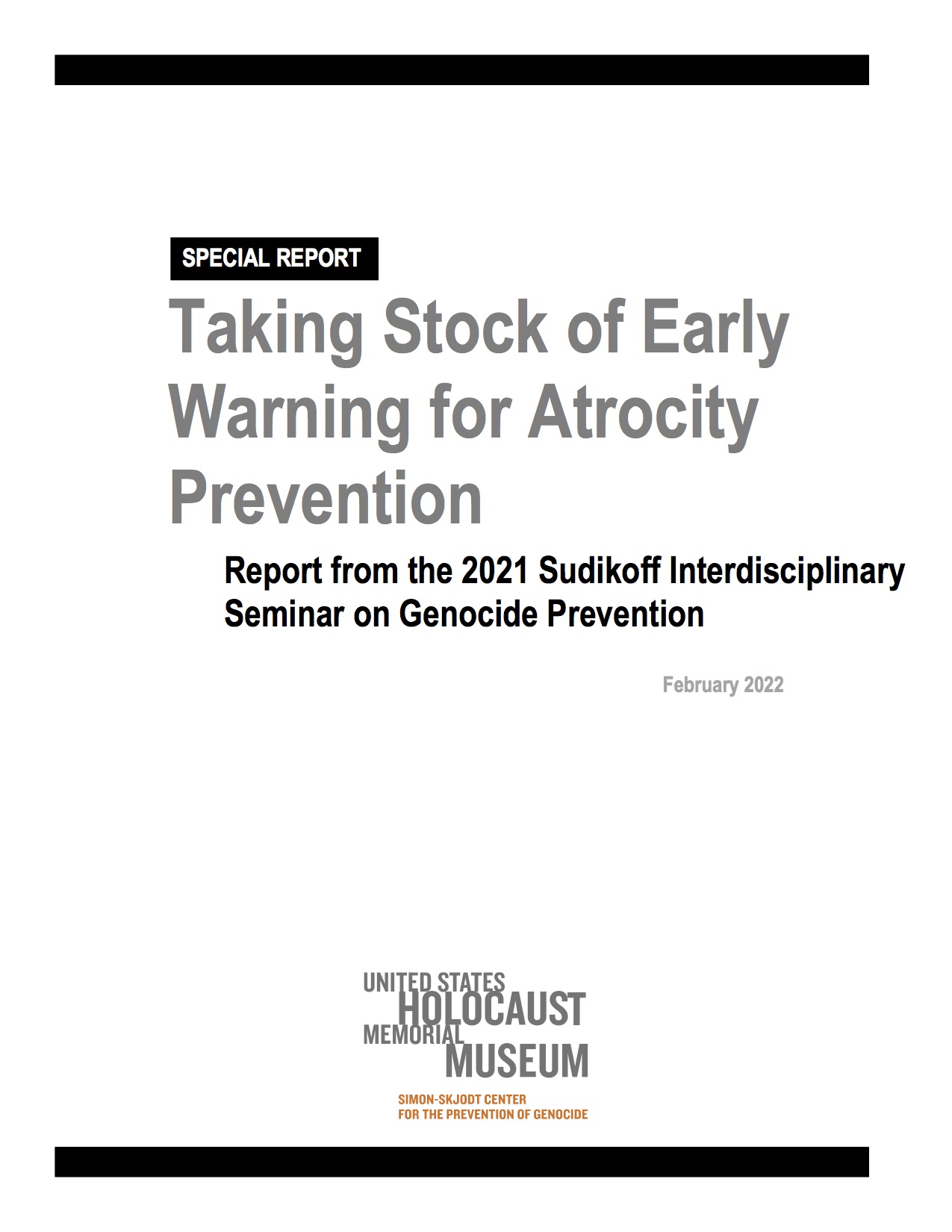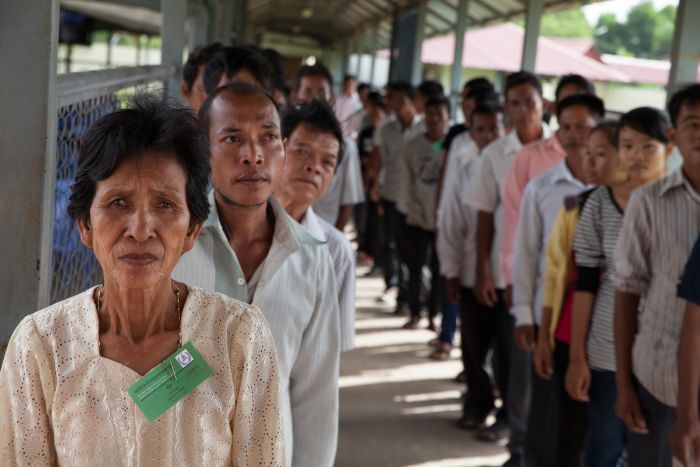This project explored the current state and future directions of early warning for atrocity prevention.
Since the launch of the Early Warning Project in 2015, the professional practice of early warning for atrocity prevention has grown and become more methodologically diverse. Several other risk assessment and early warning projects have emerged in recent years.
What challenges have statistical forecasting projects faced and how have they adapted over time? What new methods may be applied to conduct early warning assessments? What are the most effective ways to communicate risk?
The Museum’s 2021 Sudikoff Interdisciplinary Seminar on Genocide Prevention, made possible by the generous support of The Sudikoff Family Foundation, explored these questions.
Adapting to COVID-19 restrictions, the 2021 Sudikoff Seminar took the form of three webinars, each focused on a particular aspect of early warning: statistical methods for risk assessment and early warning, qualitative early warning assessments, and communicating about risk. Read rapporteur’s reports on each of the seminars.
-

Taking Stock of Early Warning for Atrocity Prevention
Selected seminar participants reflect on key themes from the seminar and offer recommendations for the future directions of the field.

